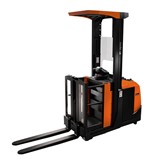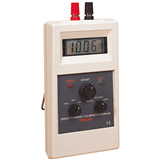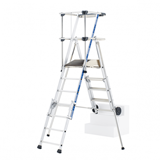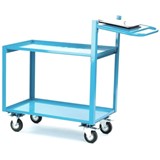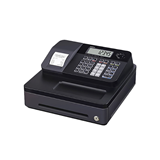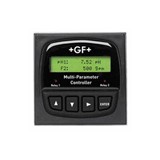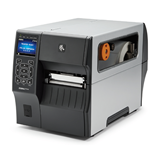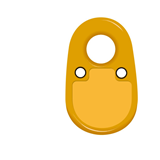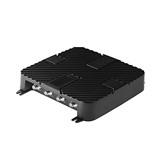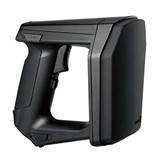Forrester Research - By Christine Spivey Overby
Without focusing RFID efforts on specific business processes, RFID adopters will fail to capture benefits and determine a manageable deployment road map. Forrester broke down a common process, order-to-cash, to uncover when RFID data significantly improves the process - and when existing technologies do an adequate job. The clearest beneficiaries? Order capture, shipping, billing, and payment receipt. But incremental improvements are limited for order routing and fulfilment. By addressing two basic questions, RFID adopters can perform similar analysis on a multitude of business processes.
RFID will improve certain parts of the order-to-cash process
RFID adopters are getting smarter. Most executives are now familiar with both the RFID vision and current technology challenges like inconsistent read rates and tag performance. But there's still a knowledge gap. As adoption heats up, many firms still don't know how RFID data will improve a discreet business process. To create a framework for addressing this gap, Forrester picked a common process, order-to-cash, and analysed how RFID will - and won't - add significant value.
The order-to-cash process at Company XYZ Manufacturing
To ground the analysis, Forrester revisited Company XYZ Manufacturing, a fictional $12 billion food company that was first created to model the cost of Wal-Mart RFID compliance. Forrester focused on Company XYZ's order-to-cash process for its line of cookies - a category with significant out-of-stocks due to frequent promotions, and, hence, a good candidate for RFID. The assumed process:
- A six-step order-to-cash process. Company XYZ breaks out order-to-cash into six discrete steps: order capture, order routing and tracking, fulfilment, shipping, billing and payment.
- Only the improvements directly related to this process. RFID data used to optimise order-to-cash can also improve related processes like replenishment planning and demand forecasting. The ancillary benefits were not counted because the business owners for each process are often different. RFID working groups must identify discrete improvements to woo each stakeholder.
- A direct supplier to a buyer relationship. Company XYZ does not rely on third-party distributors, wholesalers, or logistics providers to server its retailers. While RFID's biggest promise is cross-enterprise visibility, most midsize intermediaries will not have technical platforms or spending to support RFID-based visibility for the foreseeable future.
- Passive EPC deployments. Company XYZ needs to determine the benefits of passive, UHF-based RFID deployments that use the electronic product code (EPC) specified by retailers like Wal-Mart and Metro AG. Future deployments will also feature active RFID and sensors. For the consumer products (CP) supply chain, however, efforts are too nascent to include in Company XYZ's order-to-cash analysis.
Forrester also considers it important to analyse enterprise deployments, not pilots, when considering the full scope of process change, so it made some assumptions about technology performance and manufacturer/retailer collaboration that, while not mature today, are prerequisites for RFID benefits. These include:
- Consistent tag and reader performance. Forrester assumed high read rates, because several process benefits accrue as a result of automated data capture. Read rates should improve over the next 18 months with the introduction of Gen 2 readers and tags.
- Retailer sharing of relevant RFID events. Retailers must share data for manufacturers to realise benefits. While these agreements are embryonic, retailers like Wal-Mart have agreed to share RFID data at key points like shipment receipt and movement to the front of the store.
RFID generates data in four key areas
Passive RFID systems generate granular data at certain "choke points" where readers are installed. In Company XYZ's supply chain, read points at the factory, manufacturer distribution centre, retailer distribution centre, and store generate four different types of data.
- Production data. RFID allows Company XYZ to associate production data like manufacturing line and equipment crew with instances of cookie cases.
- Pick and pack. Company XYZ could use EPCs to locate cases of cookies in a warehouse. Even more important, at the time of packing, Company XYZ warehouse employees can associate case EPCs with specific retailer orders.
- Shipping and receiving. Both Company XYZ and its retailer customer can generate more granular shipping manifests and receipts that include case EPCs.
- Product availability. With readers between the backroom and the merchandise floor, the retailer can discern where Company XYZ's cookies are in the store.
How RFID data will (and won't) improve order-to-cash
Assuming now that Company XYX uses the four types of RFID data as inputs in the entire order-to-cash process, where are the benefits most likely to be?
- Retailer's product availability data improves order capture. Company XYZ's retail customer uses RFID product availability data to determine how much merchandise is on the floor versus in the backroom. The retailer's ordering system generates automatic orders when backroom inventory levels fall below a certain threshold. This curtails the common problem of store managers re-ordering stock when it's difficult to find in the backroom. With more accurate orders, Company XYZ - which participates in the retailer's vendor-managed inventory (VMI) programme - can reduce the total amount of cookie safety stock in the system, thereby lowering its inventory carrying costs.
- Shipping and receipt RFID data support order tracking. When case EPCs on ASNs and receipts are associated with relevant physical locations - identified using standard global location numbers (GLNs) - Company XYZ can "track and trace" product availability across its entire supply chain. The result? Improved product quality. In the case of higher-value items, track-and-trace also reduces counterfeiting and fraud.
- Manufacturer's shipping data increases shipping and billing accuracy. Company XYZ's detailed shipping manifest ensures that the right number of cookie cases is en route - thereby improving customer service levels. Company XYZ also reduces load times by eliminating manual order auditing, because pick-and-pack data associates the order with case EPCs in the warehouse management system. Finally, because the shipping manifest automatically generates an invoice that includes case EPCs, there are fewer discrepancies between shipments and invoices.
- Retailer's receiving data reduces payment receipt problems. Company XYZ matches the invoice EPCs and case EPCs listed on the retailer's receipt of goods. More accurate invoice and receipt information leads to fewer deductions caused by short shipments and transportation claims. When disputes do occur, more detailed information will cut down on the back-and-forth and follow-up that stretches out resolution time - and increases administration costs.
It's easy for an RFID working group to focus its efforts on the business benefits. After all, retailer requirements demand that CP firms figure out how to offset deployment costs. But a good business case also identifies where RFID does not yield obvious benefits. In Company XYZ's order-to-cash process, RFID has limited value in two areas because:
- Order routing can be done with bar codes. Company XYZ needs to determine the appropriate fulfilment channel for cookie orders, but the firm can do this effectively using existing bar-code systems that monitor inventory at a class - versus instance - level. Instance information on cases really only becomes important when: 1) these cases change hands - either from manufacturer to retailer or manufacturer to logistics provide - and there is a higher incidence of claims, or 2) Company XYZ needs to verify product authenticity and quality using cross-enterprise track-and-trace.
- Locating products as part of order fulfilment requires significant re-engineering. Company XYZ could use EPCs to locate pallets of cookies in the warehouse. One CP executive modelled using RFID for internal warehouse operations and determined that he could save half a day per month of a supervisor's time. At this point, RFID does not deliver enough benefit to justify re-engineering basic warehouse processes.
RFID data changes the Apps and analytics landscape
The order-to-cash process crosses several discrete applications, including order management, warehouse management, and accounts receivable. While new vendors are offering RFID support, for the applications most directly affected by RFID, not every application requires significant upgrades. So, how does the software need to change, and what can stay the same?
- Several applications will require serialised data. Apps must support serialised data when a detailed account of case EPCs is a prerequisite for RFID benefits. In the Company XYZ order-to-cash scenario, these apps are track-and-trace, replenishment, warehouse management, manufacturer management, logistics, and invoicing. Where will users find this functionality? With new apps vendors like TrueDemand and T3Ci, and existing enterprise players that have strong RFID and composite apps strategies like SAP and Oracle.
- New middleware will buffer other apps from RFID data. Some applications - such as order management and accounts receivable in this scenario - don't need RFID. For example, product availability data results in more accurate ordering, but actual orders still looks the same to the order management system. New middleware from pure plays like OATSystems and platform providers like IBM have enhanced filtering and process logic to buffer these apps form RFID data.
- Cross-enterprise applications will support track-and-trace. A new breed of orchestrators that synchronises trade partners' inventory flows will support these track-and-trace initiatives that by definition cross an entire supply chain. Look for directory services vendors like VeriSign and new ISVs like SupplyScape to target this solution.
Recommendations
A few basic questions will identify RFID's fit with any business process
It should go without saying: RFID delivers the biggest ROI when there's a clear business problem and when executives consider all the technologies, including RFID, that will solve it. But retailer mandates and curious CEOs mean that many IT and process owners have to start with the technology and work backwards. Firms need to identify where RFID fits - and where it doesn't - by addressing basic questions.
- Does the process benefit from automated data capture? - Because RFID doesn't require a line of sight, firms can capture data more quickly than with traditional bar-code systems. Firms should identify key areas where they lack visibility - particularly if this is due to bar-coding inefficiencies or high labour costs. Automated data capture increases the number of possible read points in the supply chain. For example, without RFID, Wal-Mart could not monitor case movement from the back storeroom to the merchandise floor, because bar-code reading is too slow and laborious.
- Does the process benefit from serialisation? While class-level information is great for static identity attributes - such as global trade identification number (GTIN), ingredients, and brand owner - instance data can also describe the location and condition of an individual asset or product. Therefore, RFID - which supports this serialisation - is a possible candidate for processes that require more granular, dynamic data. But there are other technologies - notable 2-D bar codes - that also support serialisation and cost less today. In fact, Allied Domecq once tested serialisation using RFID tags on cases and pallets and 2-D bar codes on items. So, when does RFID makes sense? When firms need serialisation, plus faster processing and/or deployments that are rugged enough to function in a hostile environment

